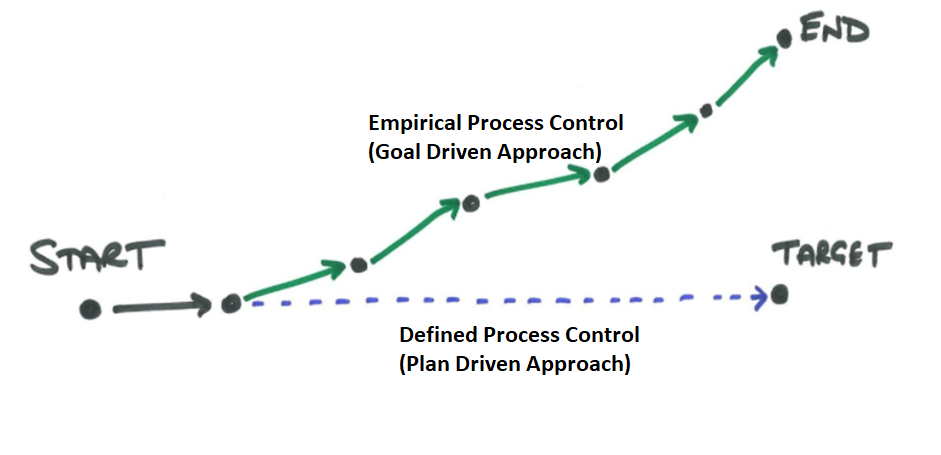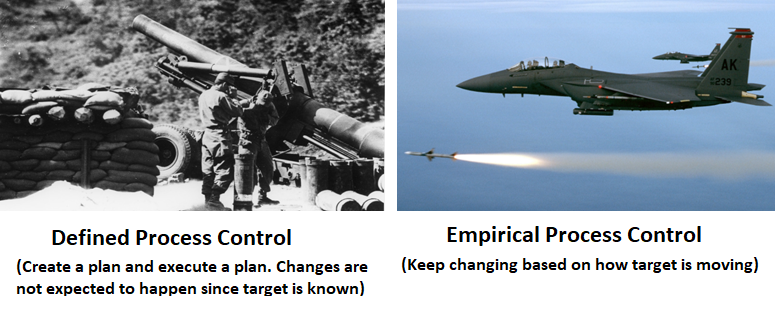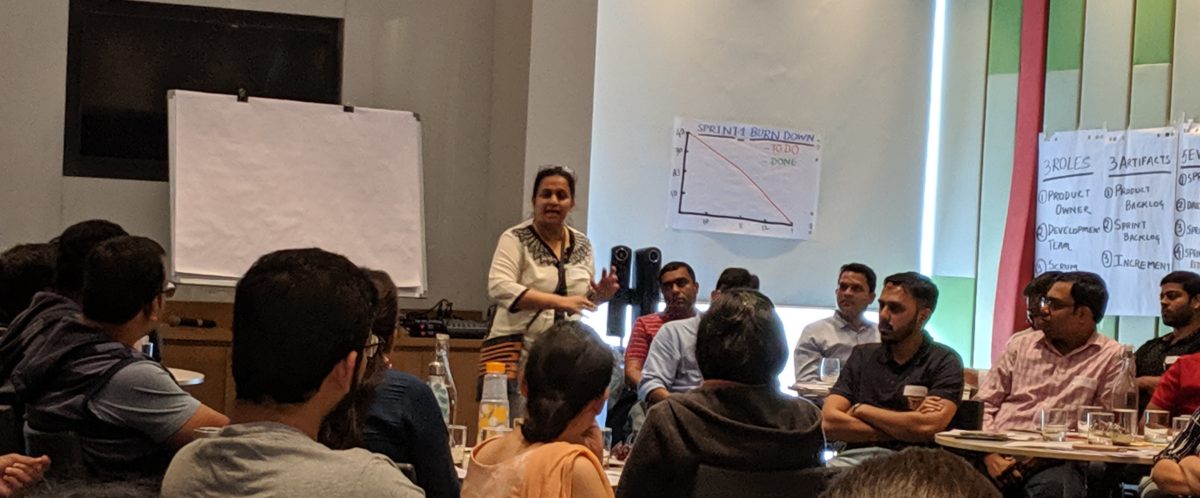An agile coach is an influencer and not an enforcer. This means he does not get to dictate what approach a team will choose. In agile, development team decides what and how of their actions! In such a situations, asking leading or probing questions is one of the most powerful tools in the coaches arsenal
What Are Power Questions?
If you ask the wrong questions, even incomplete questions, you’ll probably get a wrong answer, or at least not quite what you’re hoping for.
Asking the right question is at the heart of effective communications and information exchange. By using the right questions in a particular situation, you can often make the recipient reach the conclusion you want them to. . Rights questions will help you gather better information and learn more, build better relationships and help others to learn too.
Following are some type of questions and also some guidance on when to use and when NOT to use them.
Some Important Power Questions?
Open and Closed Questions
A closed question usually receives a single word or crisp , Boolean answer. For example, “Was the sprint on time?” The answer can only be “Yes” or “No”; “How many defects did we have?” The answer is generally a number.
Open questions encourage more in depth answers. They usually inquire about elements of what, why, how. An open question asks the recipient for his or her knowledge, opinion or feelings. This engages the recipient in more constructive manner “Tell me” and “describe” can also be used in the same way as open questions. Here are some examples:
- What did you observe in sprint planning?
- Describe how your typical daily scrum goes…
- Tell me about your feeling about this issue
- Why do you think the sprint had so many quality issues?
- How did he react to that?
Open questions are good for:
- Initiating an open dialog: “What was your experience with automating system test?”
- Provoke thought : “What else do we need to do to make this a success?”
- Finding out the other person’s opinion : “What do you think about those changes?”
- Collect more details “Was there something else that we need to know?”
Closed questions are good for:
- Testing understanding, yours or the recipient’s: “So, if I get this automation done, build wont break?”
- Ensuring that everybody is on same page “Now we know the facts, are we all agreed this is the right course of action?”
- Creating a background: “Are you happy with the code quality?”
A misplaced closed question, on the other hand, can kill the
conversation and lead to awkward silences, so are best avoided when a
conversation is in full flow.
Funnel Questions
This technique involves starting with general questions, and then funneling down to a more specific point in each. Usually, this will involve getting in more and more detail . Detectives often use this techniques while taking statements from witnesses
“How many people were involved in the fight?”
“About ten.”
“Were they kids or adults?”
“Mostly kids.”
“What sort of ages were they?”
“About fourteen or fifteen.”
“Were any of them wearing anything distinctive?”
“Yes, several of them had red baseball caps
on.”
“Can you remember if there was a logo on any of the
caps?”
“Now you come to mention it, yes, I remember
seeing a big letter N.”
Using this technique, the detective has helped the witness
to re-live the scene and to gradually focus in on a useful detail. Perhaps
he’ll be able to identify young men wearing a hat like this from CCTV footage.
It is unlikely he would have got this information if he’s simply asked an open
question such as “Are there any details you can give me about what you
saw?”
Tip:
When using funnel questioning, start with closed
questions. As you progress through the tunnel, start using more open questions.
Funnel questions are good for:
- Finding out more detail about a specific point: “Tell
me more about Option Two.”
- Gaining the interest or increasing the confidence of the
person you’re speaking with: “Have you used the IT Helpdesk?,”
“Did it solve your problem?,” “What was the attitude of the
person who took your call?”
Probing Questions
Probing questions is another strategy to get to depth of an issue. Sometimes it’s as simple as asking your respondent to elaborate “I did not understand your point about automation , can you please expand?” At other times, you need additional information for clarification, “When do you need this report by ?” Or to ascertain facts about what has been said, “How do you know that the new database can’t be used by the sales force?”
An effective way of probing is to use the 5 Whys method,
which can help you quickly get to the root of a problem.
Tip:
Use questions that include the
word “exactly” to probe further: “What exactly do you mean by
fast-track?” or “Who, exactly, wanted this report?”
Probing questions are good for:
- Gaining clarification to ensure that you have the whole
story and that you understand it thoroughly.
- Drawing information out of people who are trying to avoid
telling you something.
Leading Questions
Leading questions try to lead the respondent to your way of
thinking. They can do this in several ways:
- With an assumption – “How late do you think that the project will deliver?” Here you assume that the project will certainly be late !
- By adding a personal appeal to agree at the end – “Lori’s very efficient, don’t you think?” or “Option Two is better, isn’t it?”
- Phrasing the question so that the “easiest” response is “yes” – People naturally prefer to say “yes” rather than “no”. This psychology plays an important part in the phrasing of questions: “Shall we all approve Option Two?” is more likely to get a positive response than “Do you want to approve Option Two or not?” The “shall we” part of the questions brings you and respondent in one group while the “do you” puts the respondent in opposite camp.
- Giving people a choice between two options – both of which you would be happy with, rather than the choice of one option or not doing anything at all. Strictly speaking, the choice of “neither” is still available when you ask “Which would you prefer… A or B?” but most people will be caught up in deciding between your two preferences.
Note that leading questions tend to be closed.
Leading questions are good for:
- Getting the answer you want, but leaving the other person
feeling that they haven’t got a choice.
- Closing a sale: “If that answers all of your
questions, shall we agree on a price?”
Tip:
Use leading questions with care. If you use them in
a self-serving way or one that harms the interests of the other person, then
they can, quite rightly, be seen as manipulative and dishonest.
Rhetorical Questions
Rhetorical questions aren’t really questions at all. They they don’t expect an answer. They’re really just statements phrased in question form: “Isn’t John’s design work so creative?”
People use rhetorical questions because they are engaging
for the listener – as they are drawn into agreeing (“Yes it is and I like
working with such a creative colleague”) – rather than feeling that they
are being “told” something like “John is a very creative
designer.” (To which they may answer “So What?”)
Tip:
Rhetorical questions are even more powerful if you
use a string of them. “Isn’t that a great display? Don’t you love the way
the text picks up the colors in the photographs? Doesn’t it use space really
well? Wouldn’t you love to have a display like that for our products?”
Rhetorical questions are good for:
- Engaging the listener.
- Getting people to agree with your point of view.


